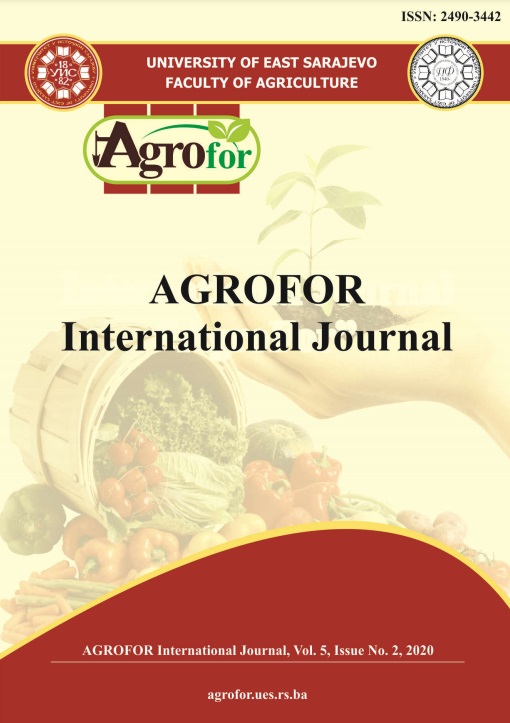SILAGE YIELD AND PROTEIN CONTENT OF FORAGELEGUMES INTERCROPPING WITH CEREALS
DOI:
https://doi.org/10.7251/AGRENG2002072PAbstract
Intercropping of most annual legumes with winter cereals is a very common
practice for forage production in many countries. The aim of this study was to
determine the effect of intercropping cereals with forage legumes on silage yield
and protein content. The completely randomized design was applied with three
replications and the experiment was established in the farm of the Western
Macedonia University in Florina. Particularly, common vetch, forage pea and faba
beans were used as forage legumes, and barley, bread wheat and triticale were used
as cereals, which were grown individually as well as intercropped with each other
in mixed rows in a sowing ratio 65:35. The plots consisted of seven rows five
meters long of which the five inner were harvested. A total of 45 experimental
plots was installed. The field was fertilized only with base fertilization. All the
cultural practices used by farmers were applied. The plants were harvested when
the legumes were at the end of the flowering period and were dried naturally for
the formation of hay. The plants were separated by hand to determine the weight of
fresh matter for each species. Samples of 100 g of hay from each experimental plot
were used to calculate the dry matter and to determine the total N using the
Kjeldahl method and subsequently the total protein content. In most cases
differences were found between the treatments concerning the dry matter and the
protein content giving a better proportion in the mixtures.

